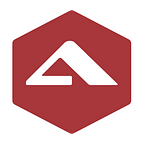Couchbase Capella vs. MongoDB Atlas vs. Amazon DynamoDB vs. Redis Enterprise Cloud
Our new performance benchmark compares the throughput and latency of popular NoSQL DBaaS systems across diverse configurations and workloads.
The rise of cloud databases
While IDC expects the global datasphere to reach 175 zettabytes by 2025, this tremendous growth brings about new requirements for handling large volumes of information. As data formats become more diverse, traditional databases with their rigid schemas eventually make it difficult to store and query complex objects efficiently and fast enough. As a result, NoSQL systems emerged in response to a rise in the amount of information and the frequency it is stored, accessed, and updated. Adapting to the data-intensive reality, the NoSQL database market is expected to grow from $4.4 billion in 2021 to $36.5 billion in 2029.
At the same time, the overall database management system (DBMS) market is also changing, continues to explode, and is projected to hit $100 billion in 2023. Since 2021, the ongoing growth has been driven primarily by cloud databases as a service (DBaaS), according to this report from Gartner. With cloud DBaaS systems representing 49% of DBMS revenue in 2021, they have been spreading faster than traditional databases lately — accounting for more than 84% of the overall market growth.
Three years ago, Gartner predicted that 75% of all databases would be deployed or migrated to the cloud by 2022. This forecast was corroborated by a 2021 report from IDC, revealing that 75% of relational database deployments were already in private clouds. Analyzing the DBMS market, experts at Gartner stated, “cloud is now the default platform for managing data…on-premises is the new legacy.” However, this shift introduced additional issues.
In particular, managing data in the cloud is a major problem for 33% of companies, a 2022 survey revealed, while 27% are challenged with the ability to scale to meet demand. The report also noted that 56% of enterprises with database infrastructure in the cloud have not been able to manage it exactly how they want to. Additionally, 77% of digital leaders want database infrastructure to be “invisible” — to avoid struggling with this layer — and 96% expect it to scale as needed.
Besides, organizations adopting NoSQL databases face additional challenges, requiring a significant amount of time and effort to deploy and manage these systems. Some of the considerations include capacity planning, monitoring, as well as proper installation and configuration.
In response to this, NoSQL DBaaS managed by third-party providers have also grown in popularity in recent years. The market of NoSQL databases deployed in the cloud is predicted to reach $24.5 billion by 2025, according to this report. The growth indicates that NoSQL DBaaS could account for the large portion of the overall cloud DBMS market in two years’ time.
Not only adoption — cloud database offerings are gradually maturing, developing beyond basic functionality. “Whereas in the last 2–3 years, the emphasis has been moving to the cloud…this last year has seen a marked maturing of the majority of offerings,” a recent Gartner’s Magic Quadrant report noted.
Still, a 2021 survey from IDC discovered the top challenges of moving structured information between on-premises and public cloud: performance (38%), data volume (33%), and interoperability (33%). Understanding the importance of performance being the #1 issue for many data engineers, we’ve been focusing on benchmarking database latencies and throughput for years.
Today, we are presenting the findings of a new report that focuses on comparing the performance of popular NoSQL DBaaS. (Here’s an official announcement.) This time, we benchmarked Couchbase Capella, MongoDB Atlas, Amazon DynamoDB, and Redis Enterprise Cloud. The evaluation encompassed distinct cluster configurations — 3, 6, 9, and 18 nodes — and four kinds of workloads. Read our blog post to get a glimpse of the performance results for the update-heavy scenario:
